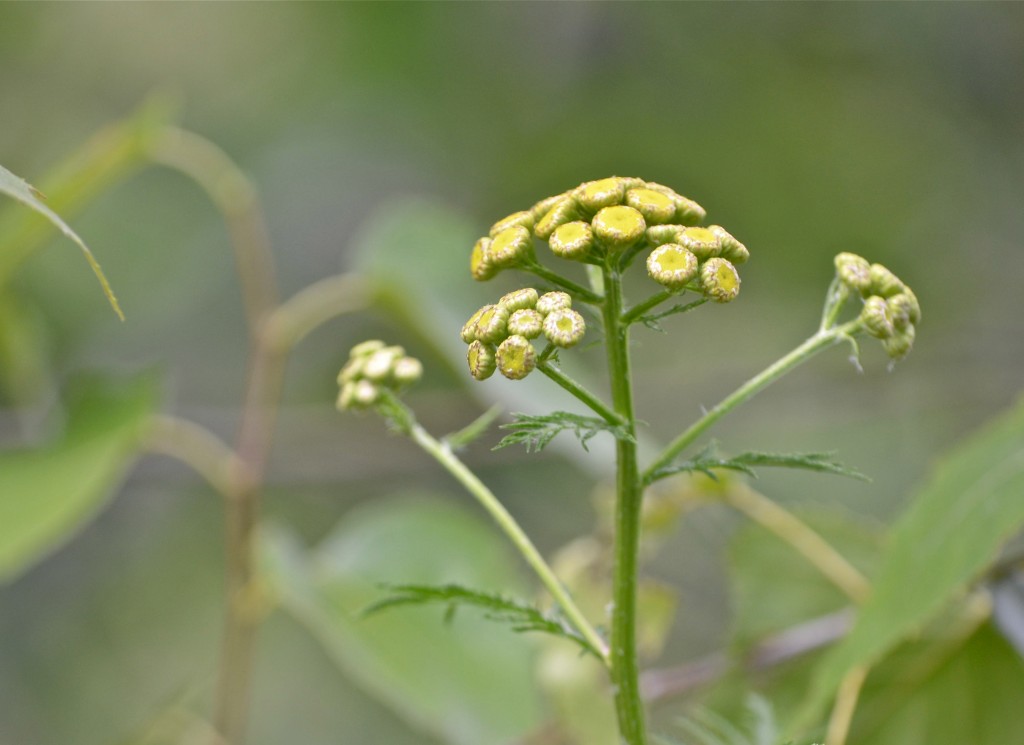A dandelionesque little opportunist colonizing the sidewalk and a neglected park in Jamaica Plain. Native to most of the northern hemisphere.
Canada Hawkweed, Kalm’s Hawkweed (Hieracium kalmii)

Spikes of yellow flowers and toothed divided leaves with 5 leaflets. This is one of those herbs with a long recorded history of medicinal use, from ancient Greece through the Middle Ages in Europe, and was prescribed for ailments on this continent into the 19th century. A bit of folklore: if you hold it over someone’s head, it will induce a deep sleep until you take it away… Rose family. Native.
Agrimony (Agrimonia)
Bonus photos for A.F. Marilyn, who likes a little context with her wildflowers. This park has 6 meadows with bits of woods separating them (for the most part), and they all serve up different flora. Here is one of them:
Toward the end of the hike, there’s a little creek. It’s running low because it’s such a dry hot summer (about 95 during this walk), but here is Lucy getting all the satisfaction she can from an inch of water:
 Toxic. Some insects are immune to the toxicity and feed mainly on this plant. This is one with a long record of cultivation as a medicinal herb, starting with ancient Greece. During the middle ages, high doses were used to cause abortions. Also used to ward off insects and for preservative aspects; packed into coffins and used at funerals, placed into bedding. Used in mosquito repellent. Aster family. Native to Europe and Asia.
Toxic. Some insects are immune to the toxicity and feed mainly on this plant. This is one with a long record of cultivation as a medicinal herb, starting with ancient Greece. During the middle ages, high doses were used to cause abortions. Also used to ward off insects and for preservative aspects; packed into coffins and used at funerals, placed into bedding. Used in mosquito repellent. Aster family. Native to Europe and Asia.
Tansy, Bitter Buttons, Cow Bitter, Mugwort, Golden Buttons (Tanacetum vulgare)
I have not passed by any of these while they’re open, while I had a camera, so this will have to do. (They are open in the morning, and closed in the afternoon.) This is back farther in the woods at Wilson. They like clear water as deep as 8 feet, and they root into the mucky bottom, and send up stems which will each bear one flower. A food source for turtles, muskrats, beavers and deer. Native.
Fragrant Water Lily (Nymphaeaceae odorata) (all those vowels are not typos.)
I thought of Goldenrod as a sinister figure in the hay fever department, but apparently the pollen that causes allergy problems is mainly from Ragweed, which blooms at the same time but is pollinated by the wind. Goldenrod pollen is too sticky and heavy for wind pollination so it relies on insect pollination. They are popular garden plants in Europe, and roadside weeds here. It contains rubber, and Thomas Edison experimented with making goldenrod a practical domestic source of rubber. Aster Family.
Goldenrod (Solidago altissima)
3-10 feet tall. This is an early stage of blooming. Foliage bright red in autumn. The fruit can be made into a lemonade-like drink, but make sure you aren’t using the related plant, POISON sumac. The leaves and berries were mixed with tobacco and smoked. Also used as a dye. Cashew family. Native.
Staghorn Sumac (Rhus typhina)
At the Arboretum, even their weeds are impressive. This bloom is at eye level. This is how it appears during the day, and will open fully at at dusk. Each bloom only lasts until the following noon. In the second picture you can see how the buds snuggle into the leaves. As usual, it’s edible (the leaves) and was used medicinally (to heal bruises and wounds). Evening Primrose family. Native. (The day I took this, I found about a dozen new plants to add. I need an “I brake for wildflowers” bumper sticker.)
Common Evening Primrose, German Rampion, Hog Weed, Fever Plant (Oenothera biennis)
I took this picture a few weeks ago when it first bloomed, but couldn’t identify it until recently, now that it is a couple of feet taller and has developed distinctive narrow seed capsules (siliques) that vertically hug the stem. I should take new pictures. In Europe it’s cultivated as food, for the leaves and the seeds which can be ground into mustard paste. Used as a condiment particularly in northern Europe. Also, was used to soothe sore throats, and called Singer’s Plant. Family Brassicaceae. Native of Europe and North Africa.
Hedge Mustard (Sisymbrium officinale)